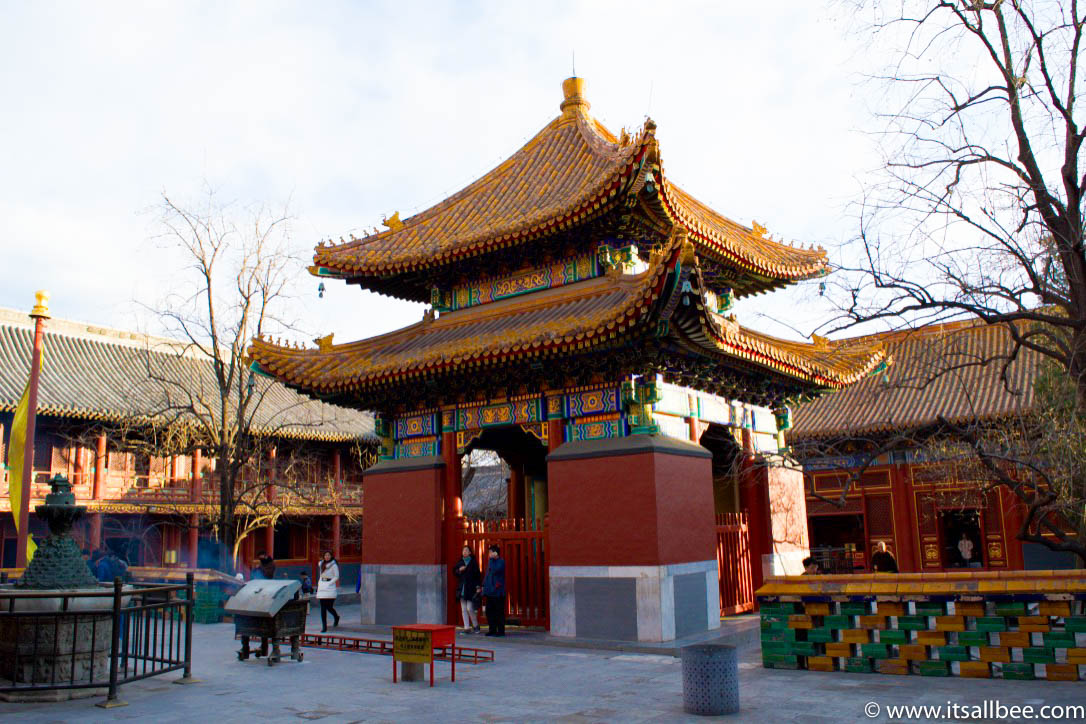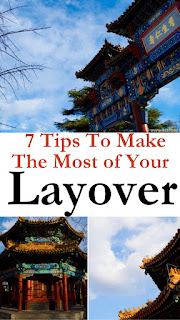In my last post, I shared tips on making the most of China's 72-hour visa-free transit, allowing you to explore a little bit of China without having to pay for the expensive visa. This time, I am sharing tips on making the most of your layover in China. These tips can also be used for any other country you may have a layover in. Layovers or stopovers, can be an inexpensive way to travel to more destinations for less or getting an intro to a city without investing too much time or many. A layover/stopover allows you to stay in a connection city for greater than 24 hours but less than the duration of your planned trip. Planning in advance means that you can add an addition country or city with ease. Things like making sure you have an idea of how long the journey is from the airport to town, having a little bit of local currency will make sure you can get exploring quickly without using up your layover time queuing up for currency exchange booths.
Below are some tips on making the most of your layover in China and any other country you may have a layover in.
Tips to Make The Most of Your Layover In Beijing
1. Pick One of 2 Things/Activities
Of course, this is a city with the world famous Great Wall of China, Tiananmen Sq, Temple of Heave, Forbidden City and many more interesting places that are I am sure on many a bucket list. With a short layover, though, you cannot see everything. So pick one of those places that you can fully take in and enjoy without rushing around. You can also book tours for the Great Wall of China but I would advise you to at least be on a 10-hour Layover or more before doing this tour as the drive to and back takes a while, also factoring in the traffic in China. It would not be wise to miss your flight on the 72-hour Visa as the Chinese immigration officials will not be understanding about that.
2. Research The Best Way To Get To The Chosen Location
On this occasion, we thought best to visit Lama Temple during our layover in Beijing. We looked at the closest station to Lama Temple. From there on we looked at what train line that station was on. How many times we needed to change trains to get to Lama Temple as well as the train from the airport into the city.
3. Look At Cost Of Transportation To Chosen Location/Activity
Transportation from Beijing Airport requires you to take the airport train into the city before being able to use any of the underground train links. The train from Beijing Airport into the city take about 25 minutes. Factor in the return and you are now just under an hour as well as any wait time you may need before the train arrives if you have to wait for one.
4. Print or Have Ready Screenshots(On Mobile) With Underground/Transport Mapping
When we arrived in the city from Beijing Airport, we were now able to join the underground train network. I had pdf versions of the underground map as well as used Google street maps to help me prepare for how to get there. By the time we got there I had done enough research that I was able to navigate from the airport to Lama Temple without needing to look at my map or seek directions. Stations in Beijing have a mix of Chinese and English signage so you will be ok if you can read English or Chinese. The stations are also marked with signage directions to tourist attractions in this case directions and exits to Lama Temple were clearly marked. Also, note, that preparation will serve you well as there may not be a lot of people who speak English.
5. Have The Right Currency For the Country(Chinese Currency In This Case)
Even if you are not spending the night in China and are in for a layover over a few hours, ensure you have currency before you arrive. Before leaving London, I changed about £70-80 in Chinese currency. This allowed me to quickly buy tickets for the airport shuttle/train without having to now search for a bureau de change. You don't want to waste precious exploring time queuing up for currency, so make sure you change the money before your arrive. Trains from Beijing Airport to the city were 50RMB each person. We then bought singles to the stations to Lama Temple and back to the station with airport station. I would highly recommend you either pick up a map or have one on your phone as its easier to point to the stations you want the ticket for when asking for tickets should there be any language barriers. Having some local currency also means you can quickly pay for entrance at the chosen attractions or check out small markets and cafes that may not be accepting card payments.
6. Have All Your Required Documents Needed For A Swift Exit And Return
As I knew we were going to be exploring Beijing on our 7-hour layover, I ensured most of our luggage was checked in and only had a small carry-on suitcase to refresh ourselves after the long London-Beijing flight. I also made sure we had easy access to documents need to exit and return to the airport. You also don't need to re-check so head straight to security. Make sure you have your passports and boarding passes ready
7. Book A Hotel For Any Layover over 24 Hours
If your layover includes a night's stay in the city you have your layover, ensure you have your hotel booking to hand. If you have to book your hotel stay last minute, you can check out Beijing hotels on Booking.com, which always has great deals. I make pretty much all my hotel bookings through Booking.com when I travel.
Exploring Lama Temple In Beijing
Yonghe Lamasery(Harmony and Peace Palace Lamasery), now known as Lama Temple was built in 1664 during the Qing Dynasty and was the residence of Emperor Yongzheng when he was just a prince. It was later changed to a Lamasery in 1744 before becoming the national center of Lama administration. As you enter the gates there are stone lions, symbols which show that it was originally the dwelling of an Imperial Family member. Lama Temple is one of Beijing's most famous monasteries. I wrestled with the decision of choosing between Tiananmen Square and Lama Temple considering the time we had with our layover. I was glad we ended up sticking to the Temple.
Your tickets into the Temple include a box of incense to light and burn at censer of Yonghe Temple. It's fascinating how each and every spot of the temple has meaning and purpose to it. Like how you have particular roads that were specifically used for carriages of emperors and their wives during the Qing Dynasty between 1644 and 1911. To having 3 archways and having the center one for exclusive use of the emperors. I love learning about those little details when I visit a place. Below are some of the pictures from our visit.
Entrance to Lama Temple in Beijing
 |
| Coat by M&S (sold out), Boots by Office, Bag by Regent(below). Similar items below |
 |
| A censer at Yonghe Temple |
 |
| The three large archways, the central one of which was for the exclusive use of the emperors. |
 |
| Chinese Guardian Lion, symbols which show that it was originally the dwelling of an Imperial Family member. Statues of guardian lions have traditionally stood in front of Chinese Imperial palaces, Imperial tombs, government offices, temples, and the homes of government officials and the wealthy, from the Han Dynasty , and were believed to have powerful mythic protective benefits. |
 |
| The Hall of Harmony and Peace |
 |
| The Hall of Everlasting Protection |
Never Miss A Post - Follow on Bloglovin



















































Great post. I totally agree with making the most of layovers! I recently spent 24 hours in Dubai and packed loads in! I write a post about it here: http://thegreeneyedgirl.co.uk/2016/04/05/24-hours-in-dubai/
ReplyDeleteClaire x
www.thegreeneyedgirl.co.uk
Great post. I totally agree with making the most of layovers! I recently spent 24 hours in Dubai and packed loads in! I write a post about it here: http://thegreeneyedgirl.co.uk/2016/04/05/24-hours-in-dubai/
ReplyDeleteClaire x
www.thegreeneyedgirl.co.uk